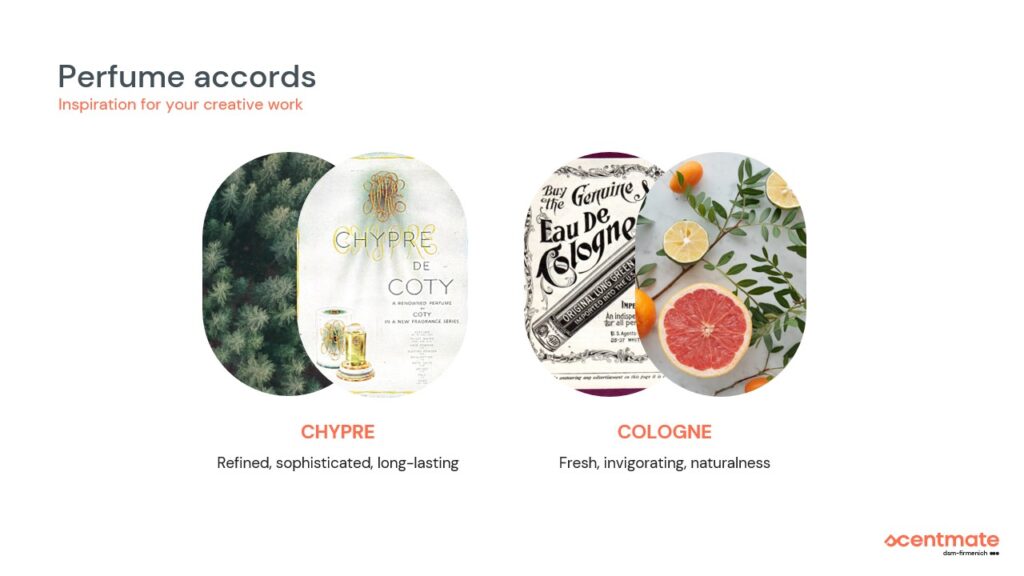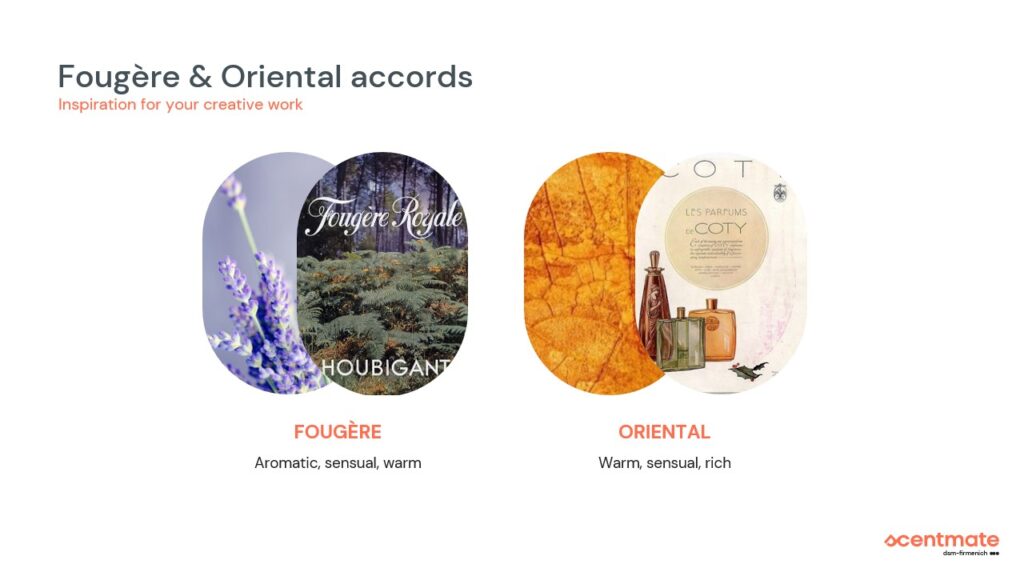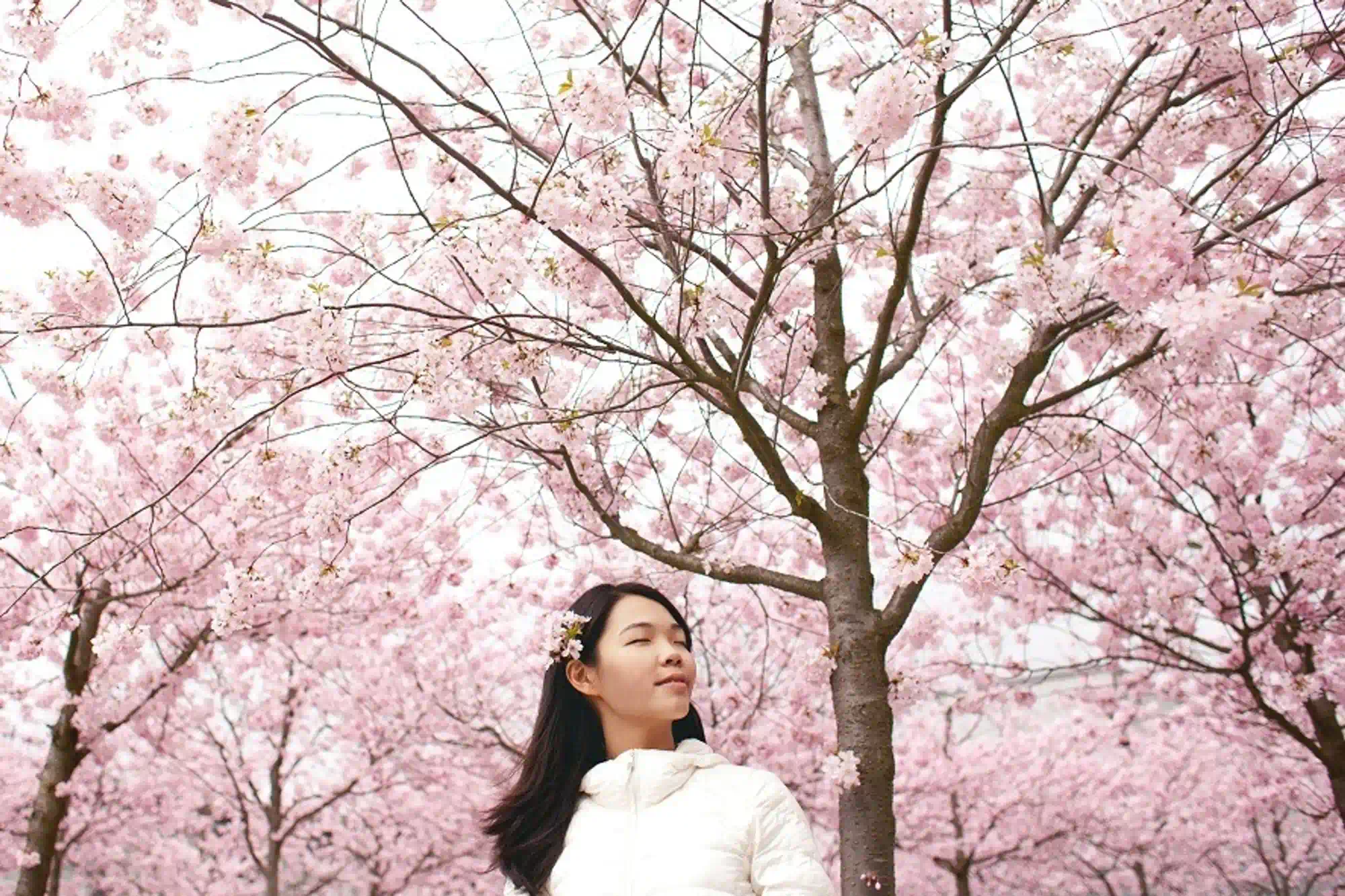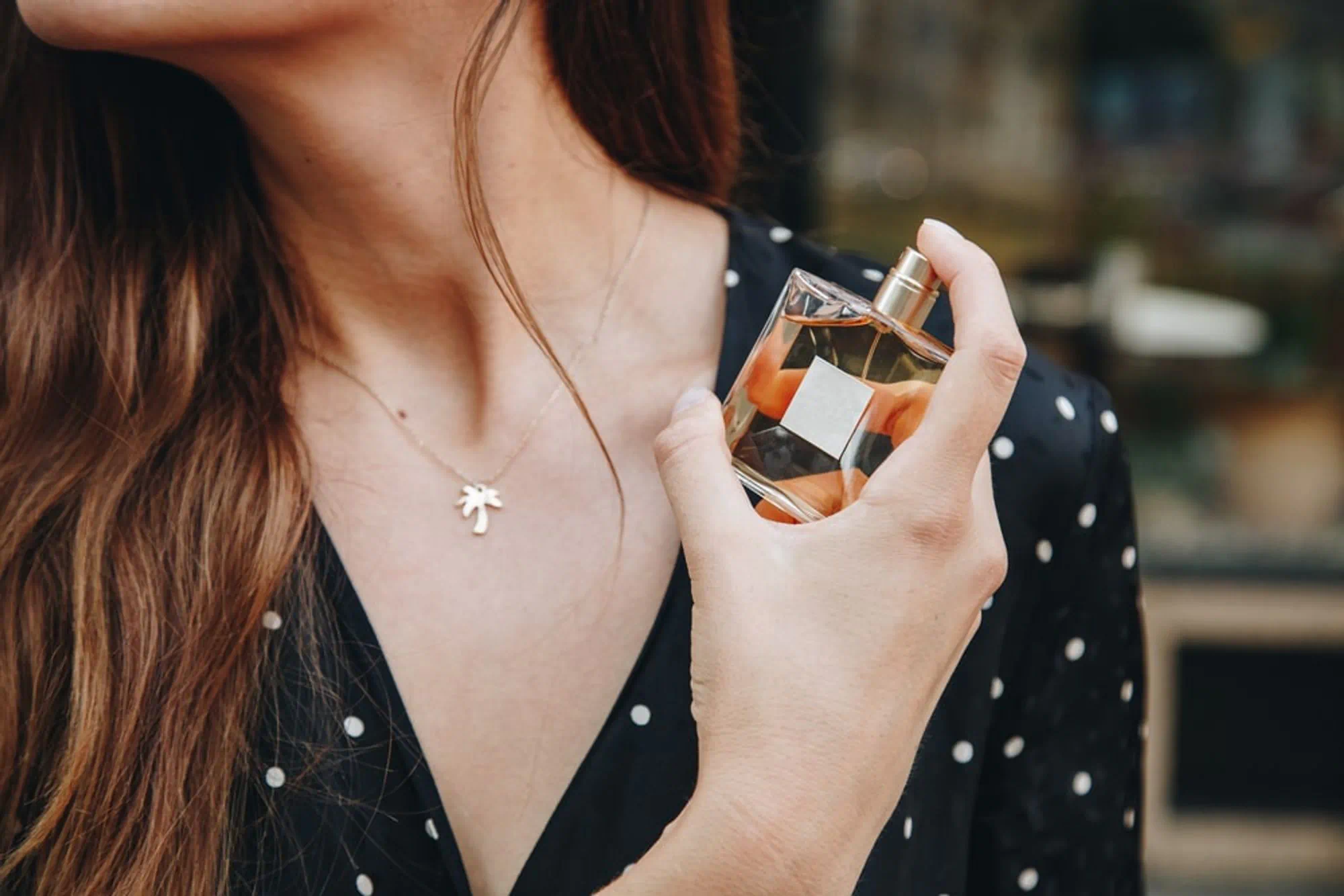2 min
What is an accord? Borrowing from musical terminology, accord in perfumery means a combination of several ingredients that become more than a sum of their parts ; they acquire a distinctive character. When an accord is added into a fragrance formula, it lends the finished composition its distinctive, unique character. Below are the four main accords used in perfumery. They borrow elements from various olfactive families and give memorable signatures to perfumes. We encourage you to experiment with them in your creative work.

Chypre accord
The chypre accord comes from a rich and sophisticated accord reminiscent of woodland smell. Bergamot, rose, patchouli, and oak moss are the four main building blocks of the chypre accord. This classic construction with long-lasting strength pairs well with green notes, fruity accents and leathery animalic notes to impart a distinctive character. Modern floral, fruity and musky ingredients add novel inflections to this timeless structure.
Inspiring description
Contrasted, rich and long-lasting. Refined and sophisticated.
Famous perfume example
Chypre by Coty. In 1917, François Coty created fragrance with the recognisable structure of bergamot, patchouli, oakmoss, and labdanum. These warm and sensual notes were complemented with jasmine, rose, leather, tobacco notes. It defined the Earthy Mossy olfactive family and the chypre accord.
Cologne accord
Eau de Cologne refers both to a product with a lower oil concentration in alcohol than EDT and to a specific blend of citrus, aromatic and orange blossom notes. Traditionally, it was used for hygiene and freshening up. Cologne retains its popularity, especially as consumers seek more authenticity and naturalness in perfumes.
Inspiring description
A fresh and invigorating blend of citrus, herbal and orange blossom notes.
Famous perfume example
Eau de Cologne by Giovanni Paolo Feminis. The creation of Aqua Mirabilis, the first “Eau de Cologne” by Giovanni Paolo Feminis in 1695 marked the start of the cologne fashion—and the popularity of the cologne accord.

Fougère accord
A classical, masculine combination of aromatic notes such lavender, geranium, oakmoss and coumarin, with a tobacco background. Fougère can also contain spices, ambers, powdery notes, orange flower and moss. The Fougère structure appeared in 1884 with the creation of Fougère Royale from Houbigant. In French, fougère means “fern,” and the accord was so named, because the perfumer who created it, Paul Parquet, wanted to entirely abstract scent. He believed that ferns had no scent in nature, so he created his own fantasy version of a fragrant fern, fougère.
Inspiring description
Intensely fresh, aromatic, clean, and yet, sensual and warm. The archetype of masculine grooming fragrances, the so-called “barbershop accord.”
Famous perfume example
Fougère Royale by Houbigant was created by Paul Parquet in 1882. Lavender together with geranium gives bright freshness. To soften this structure, Parquet used a combination of oakmoss and coumarin, a distinctive, contrasted pairing that still powers fougère accords today.
Amber Accord
Blending of warmth and sensuality, the amber accord explores the strength and softness of materials such as vanilla and balms. Often introduced with refreshing citrus or floral accents, the rich character of these fragrances is also built on warm spices, resins, animalic notes and precious woods. Masculine or feminine, modern amber fragrances are enhanced with modern materials like fruit, gourmand notes and new-generation musks and crisp ambers. Such additions make them more accessible and contemporary.
Inspiring description
A rich and warm accord with notes of vanilla, balms, resins, spices, and woods.
Famous perfume example
Ambre Antique by Coty. The amber accord took shape with Ambre Antique created by François Coty in 1908. Coty used warm and sensual notes such as balms, resins, vanilla, cistus labdanum, coumarin, ambergris to suggest opulence and sensuality.
With our palette, you have access to more than 3000+ ingredients that include naturals, synthetics as well as bases. Read about the olfactive families to learn how the materials are grouped.



